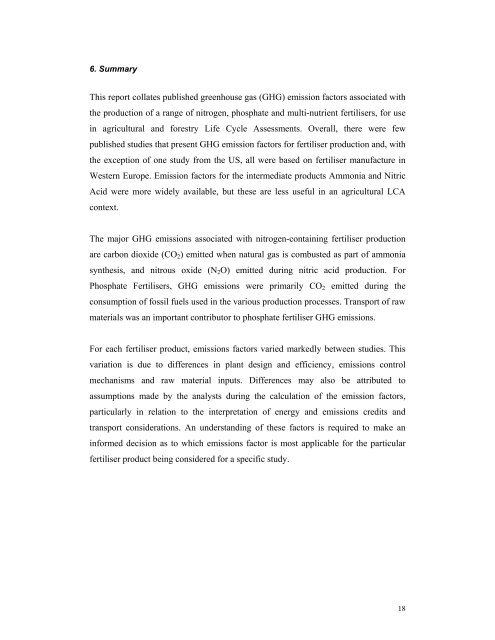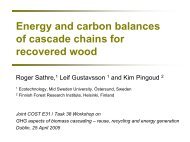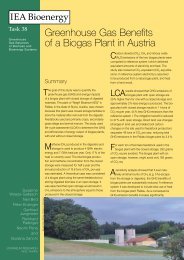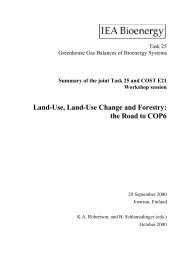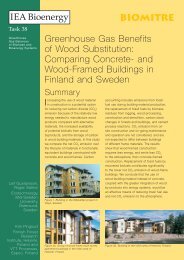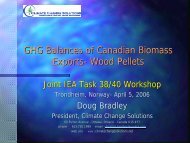A review of greenhouse gas emission factors for fertiliser production.
A review of greenhouse gas emission factors for fertiliser production.
A review of greenhouse gas emission factors for fertiliser production.
Create successful ePaper yourself
Turn your PDF publications into a flip-book with our unique Google optimized e-Paper software.
6. SummaryThis report collates published <strong>greenhouse</strong> <strong>gas</strong> (GHG) <strong>emission</strong> <strong>factors</strong> associated withthe <strong>production</strong> <strong>of</strong> a range <strong>of</strong> nitrogen, phosphate and multi-nutrient <strong>fertiliser</strong>s, <strong>for</strong> usein agricultural and <strong>for</strong>estry Life Cycle Assessments. Overall, there were fewpublished studies that present GHG <strong>emission</strong> <strong>factors</strong> <strong>for</strong> <strong>fertiliser</strong> <strong>production</strong> and, withthe exception <strong>of</strong> one study from the US, all were based on <strong>fertiliser</strong> manufacture inWestern Europe. Emission <strong>factors</strong> <strong>for</strong> the intermediate products Ammonia and NitricAcid were more widely available, but these are less useful in an agricultural LCAcontext.The major GHG <strong>emission</strong>s associated with nitrogen-containing <strong>fertiliser</strong> <strong>production</strong>are carbon dioxide (CO 2 ) emitted when natural <strong>gas</strong> is combusted as part <strong>of</strong> ammoniasynthesis, and nitrous oxide (N 2 O) emitted during nitric acid <strong>production</strong>. ForPhosphate Fertilisers, GHG <strong>emission</strong>s were primarily CO 2 emitted during theconsumption <strong>of</strong> fossil fuels used in the various <strong>production</strong> processes. Transport <strong>of</strong> rawmaterials was an important contributor to phosphate <strong>fertiliser</strong> GHG <strong>emission</strong>s.For each <strong>fertiliser</strong> product, <strong>emission</strong>s <strong>factors</strong> varied markedly between studies. Thisvariation is due to differences in plant design and efficiency, <strong>emission</strong>s controlmechanisms and raw material inputs. Differences may also be attributed toassumptions made by the analysts during the calculation <strong>of</strong> the <strong>emission</strong> <strong>factors</strong>,particularly in relation to the interpretation <strong>of</strong> energy and <strong>emission</strong>s credits andtransport considerations. An understanding <strong>of</strong> these <strong>factors</strong> is required to make anin<strong>for</strong>med decision as to which <strong>emission</strong>s factor is most applicable <strong>for</strong> the particular<strong>fertiliser</strong> product being considered <strong>for</strong> a specific study.18


